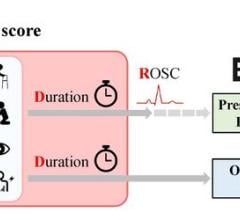
Aug. 21, 2024 — The incidence rate of heart failure was 2- to 3-fold higher among American Indian populations than rates observed in studies focused on other population groups, such as African American, Hispanic or white adults, in a new study published in the Journal of the American Heart Association.
The results were calculated using a new, proposed risk prediction scale for heart failure specifically for American Indian adults. The analysis also found smoking, Type 2 diabetes status, kidney damage, previous heart attack and high blood pressure are major modifiable determinants of developing heart failure over five to 10 years among American Indian adults.
“Implementation of our proposed risk prediction scale in clinical practice can contribute to optimized risk assessment and to the development of preventive strategies to reduce heart failure events and deaths in American Indian communities and populations with a high burden of Type 2 diabetes, which have been underrepresented in previous studies,” said lead study author Irene Martinez-Morata M.D., Ph.D., and a researcher at Columbia University’s Mailman School of Public Health in New York City.
Heart failure is a leading cause of death among people with Type 2 diabetes, and occurs at a higher rate in American Indian populations than in Black, Hispanic and white populations in the U.S.
In this study, researchers developed a scale to predict heart failure risk specifically in American Indian people, based on data from about 3,000 participants in the Strong Heart Study, an ongoing, federally funded study. The inexpensive risk prediction equation, which uses readily available tools focused on Type 2 diabetes management and kidney damage.
The analysis found:
- The overall incidence rate of heart failure was 2- to 3-fold higher in participants of the Strong Heart Study than rates observed in other population-based studies such as those including African American, Hispanic or white adults;
- Sustained levels of high blood sugar were associated with a 23% increased risk on top of Type 2 diabetes, indicating that blood sugar control is important to reduce the risk of heart failure even among patients with established diabetes;
- Smoking was associated with double the risk of developing heart failure over both 5 and 10 years;
- Elevated albumin in the urine, which can indicate kidney damage related to Type-2 diabetes and hypertension, was linked with an 8-times higher risk of developing heart failure over 5 years;
- Having a previous heart attack was associated with a nearly 7 times higher risk of developing heart failure within 5 years;
- Older age was associated with roughly 70% to 80% higher risk of developing heart failure over 5 or 10 years.
- Type 2 diabetes was associated with a 74% increased risk of developing heart failure within 10 years; and
- High blood pressure increased the risk of developing heart failure at 10 years by 43%.
The elevated risk of heart failure associated with Type 2 diabetes was independent of other risk factors for heart failure, including smoking, high cholesterol, body mass index, previous heart attack history and kidney complications.
Martinez-Morata said multiple factors contribute to the development of Type 2 diabetes, including lifestyle elements, such as unhealthy diet and lack of physical activity, as well as exposure to environmental toxins like arsenic or lead.
“American Indian communities have suffered historical injustices in exposure to contaminants, health care accessibility and other sociodemographic factors resulting in a long history of health disparities. Thus, the documented high rates of Type 2 diabetes in these communities are underlined by multiple complex factors beyond individual behaviors,” she explained. “In addition, American Indian communities have been historically underrepresented in epidemiological research, resulting in underreporting of disease burden.”
A 2020 scientific statement from the American Heart Association noted that the prevalence of cardiovascular has been rising among American Indians and Alaska Natives over the past 50 years. It stated that the social determinants of health facing both communities are longstanding and complex, and access to health care is limited. Historical events such as displacement, war, infectious disease, unfulfilled agreements, unethical research practices and decimation of tribal lands resulted in mistrust of the U.S. government and the scientific and medical community for many American Indians and Alaska Natives. Being forced to move from their native lands and living in rural areas without access to proper health care contributed to the issue. Based on 2017 data, 21% of American Indians live below the federal poverty line.
The study’s limitations include incomplete information of different heart failure subtypes, as well as limited data on participants’ history of heart attack. The study’s strengths included follow-up data for participants for more than two decades, the researchers noted.
Study details and background:
- The study analyzed data from 3,059 participants of The Strong Heart Study. About 58% of the participants were women. Their ages were 45 to 74 years old when they were recruited from 13 different American Indian tribes in North Dakota and South Dakota (Northern Plains), Oklahoma (Southern Plains) and Arizona (Southwest).
- Participants’ baseline visit was conducted between July 1989 and January 1992. For this analysis, follow-up ceased at the end of 2019.
- 70% of the participants reported they were either current or former smokers. Clinical tests revealed 38.7% had high blood sugar as measured by HbA1c levels, an indicator of sustained levels of glucose in the blood; 36.7% had high blood pressure; and 15.2% had Type 2 diabetes.
- About 16.5% participants developed heart failure during the study period.
Co-authors, disclosures and funding sources are listed in the manuscript.
Studies published in the American Heart Association’s scientific journals are peer-reviewed. The statements and conclusions in each manuscript are solely those of the study authors and do not necessarily reflect the Association’s policy or position.


 March 25, 2025
March 25, 2025 








